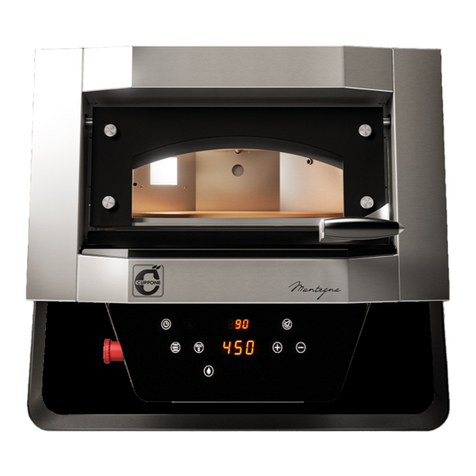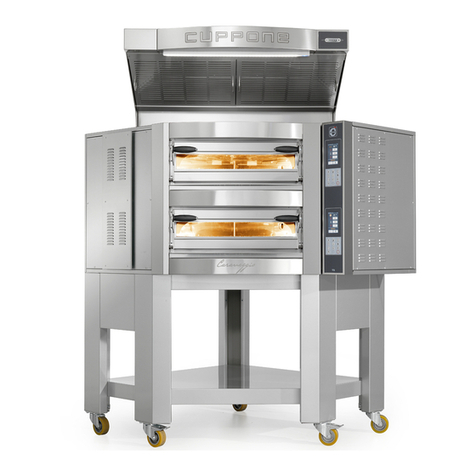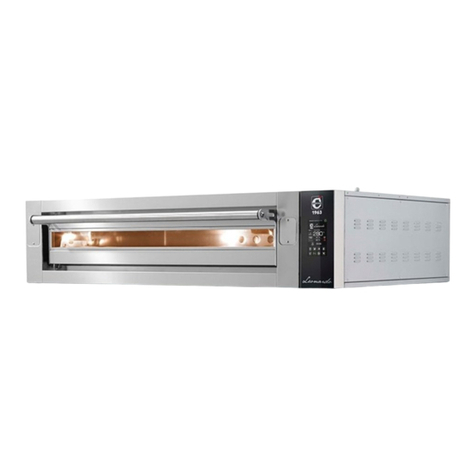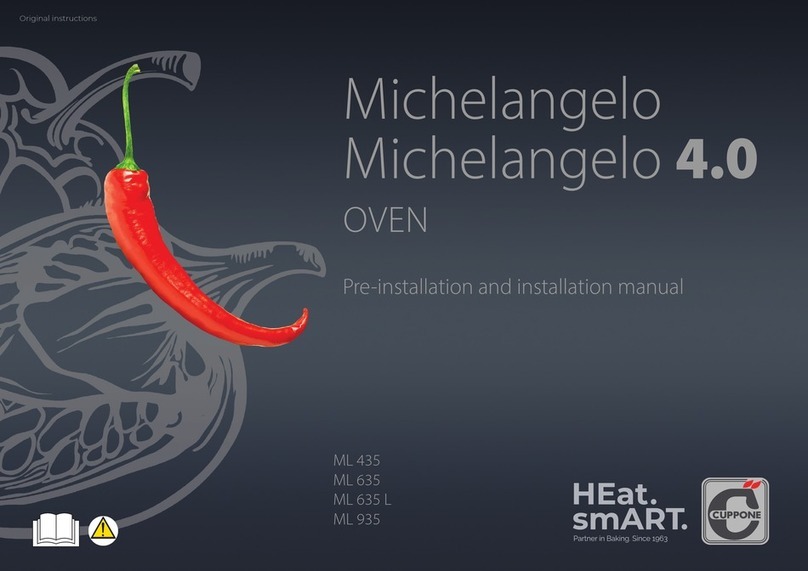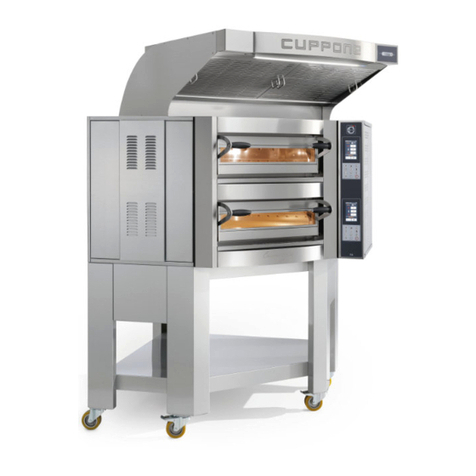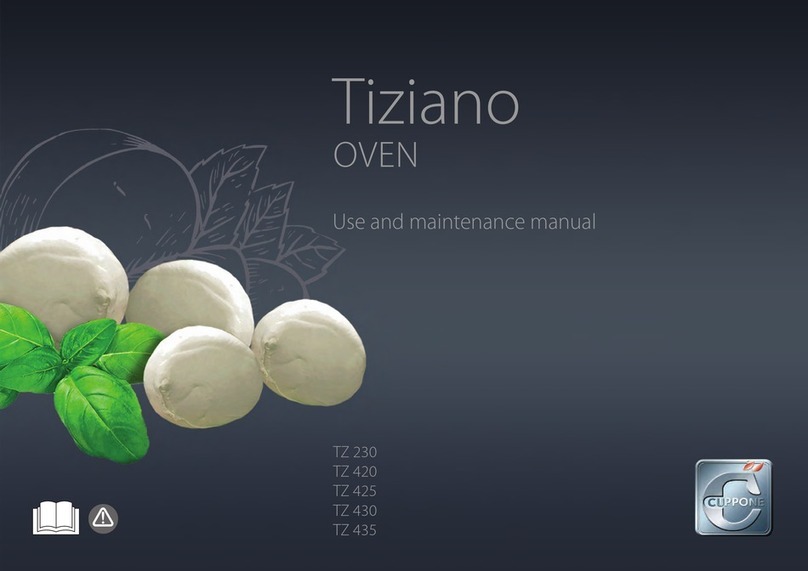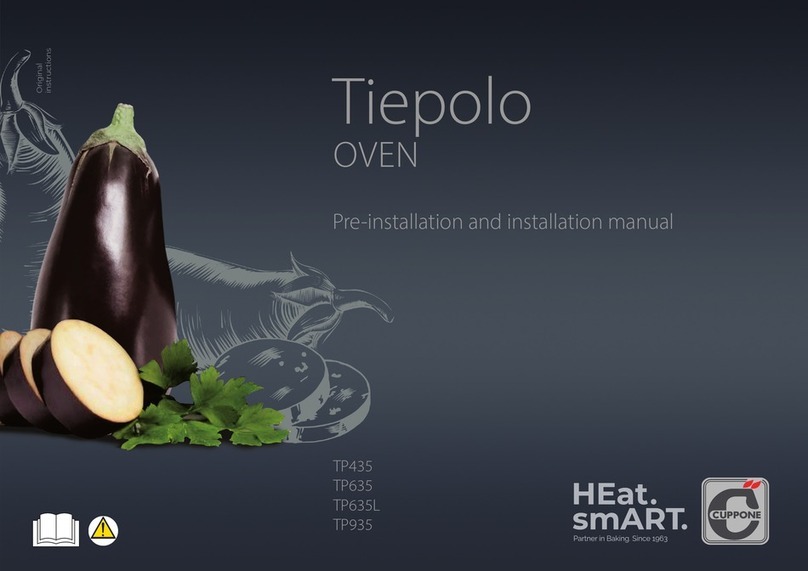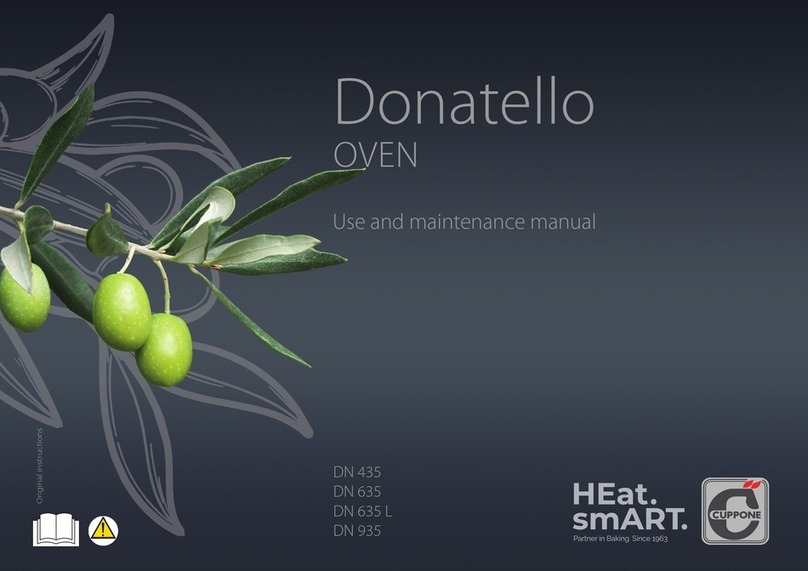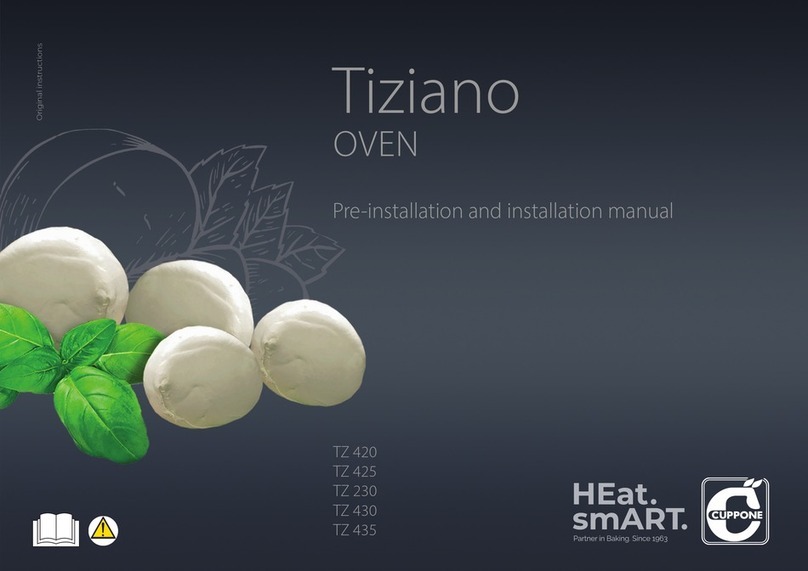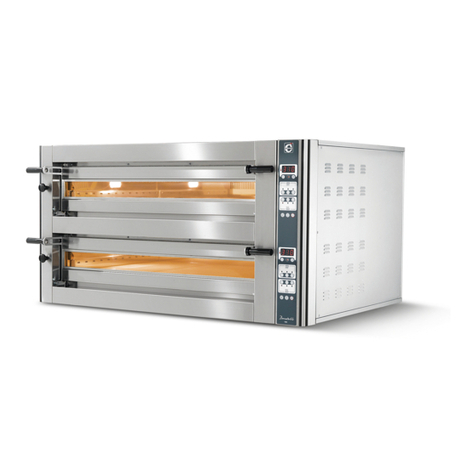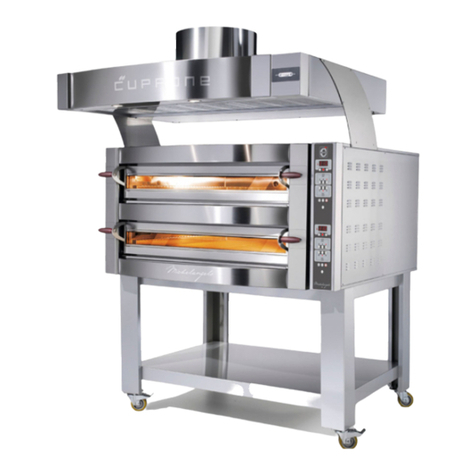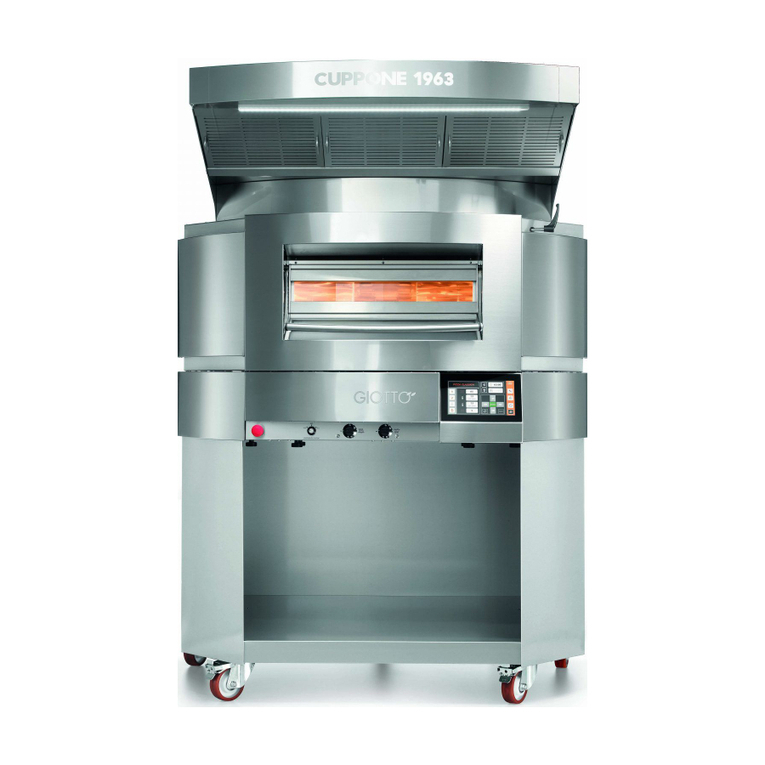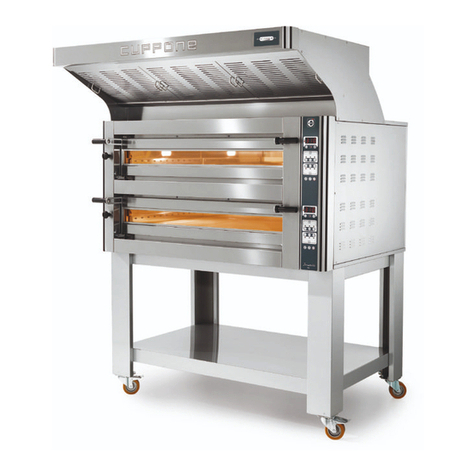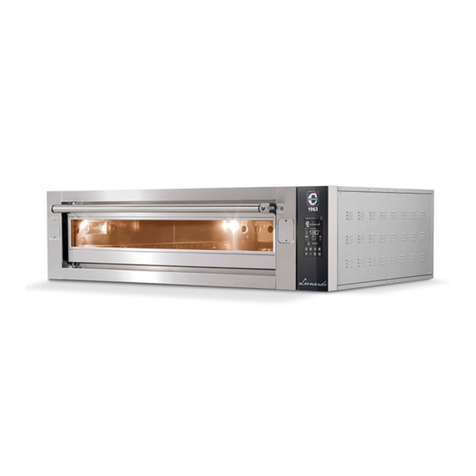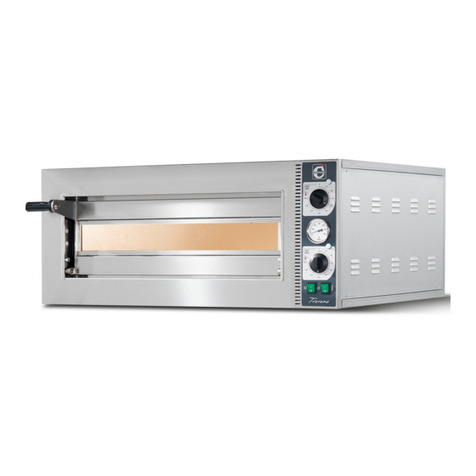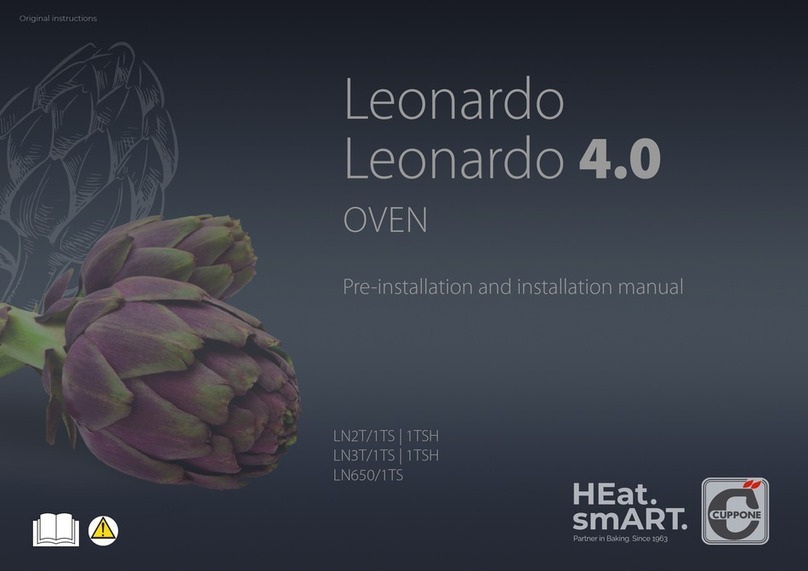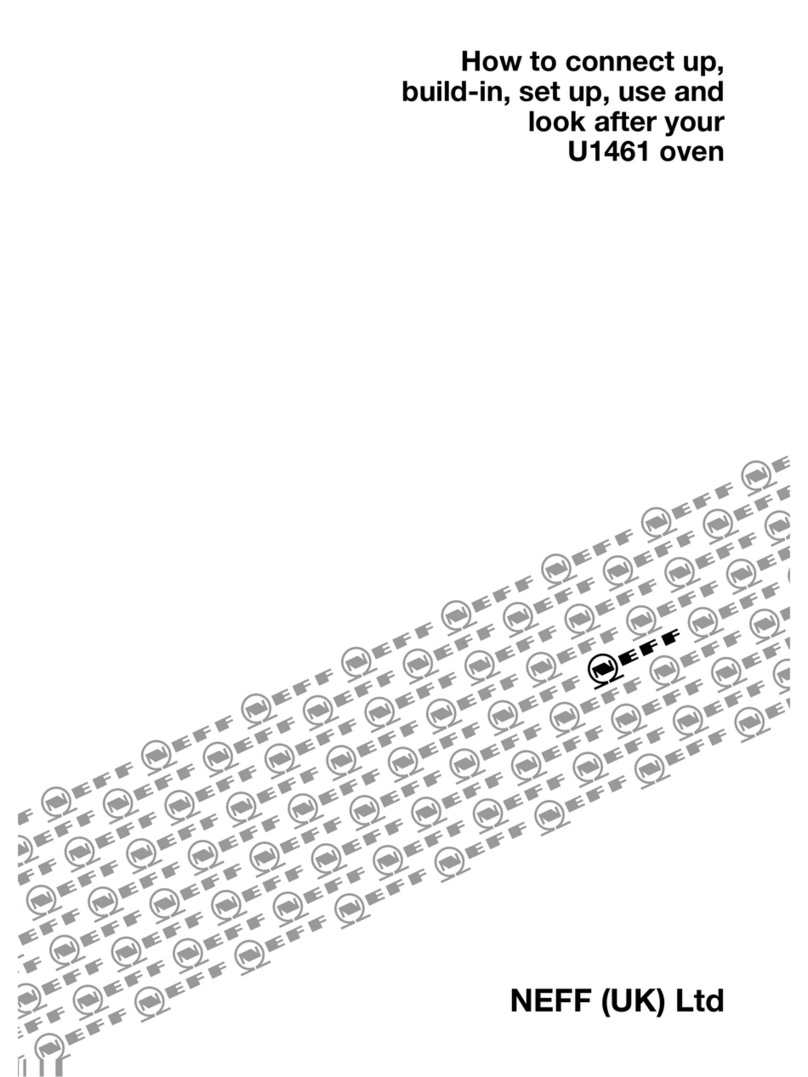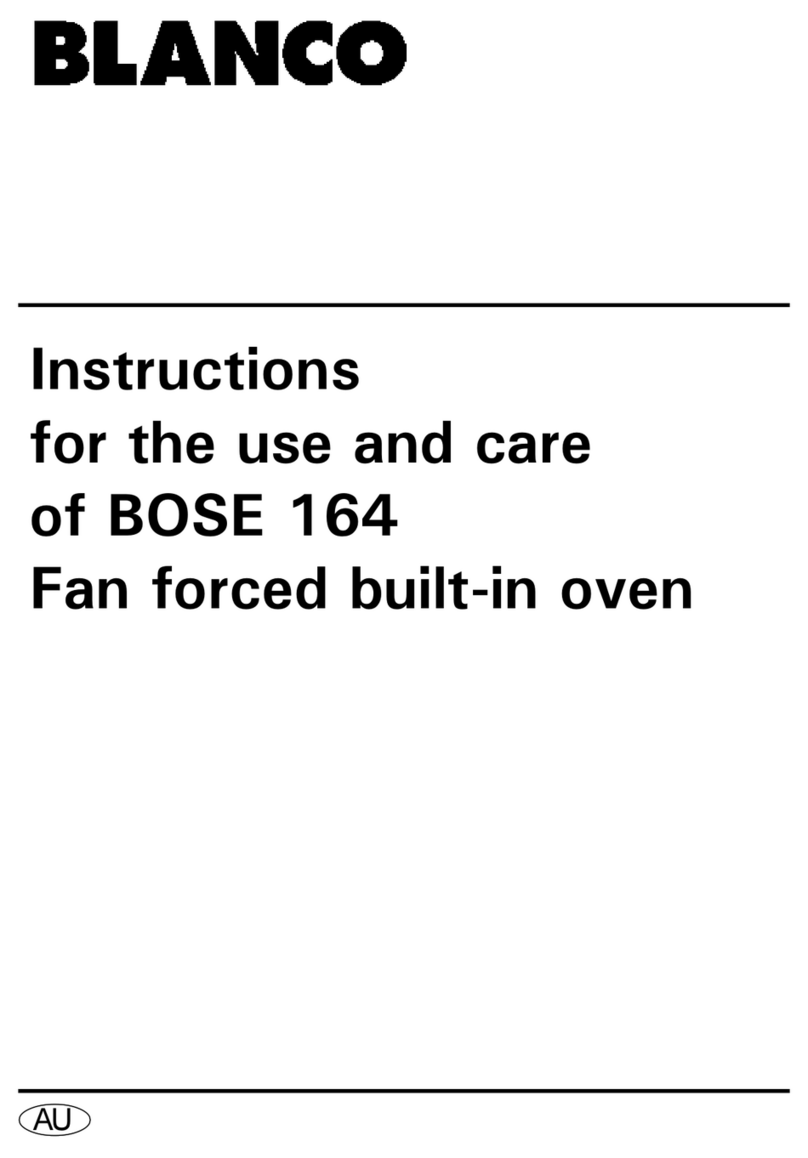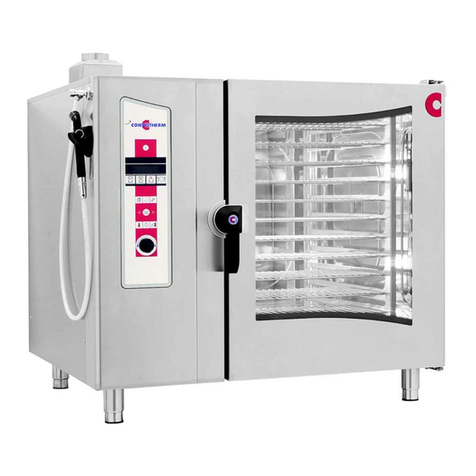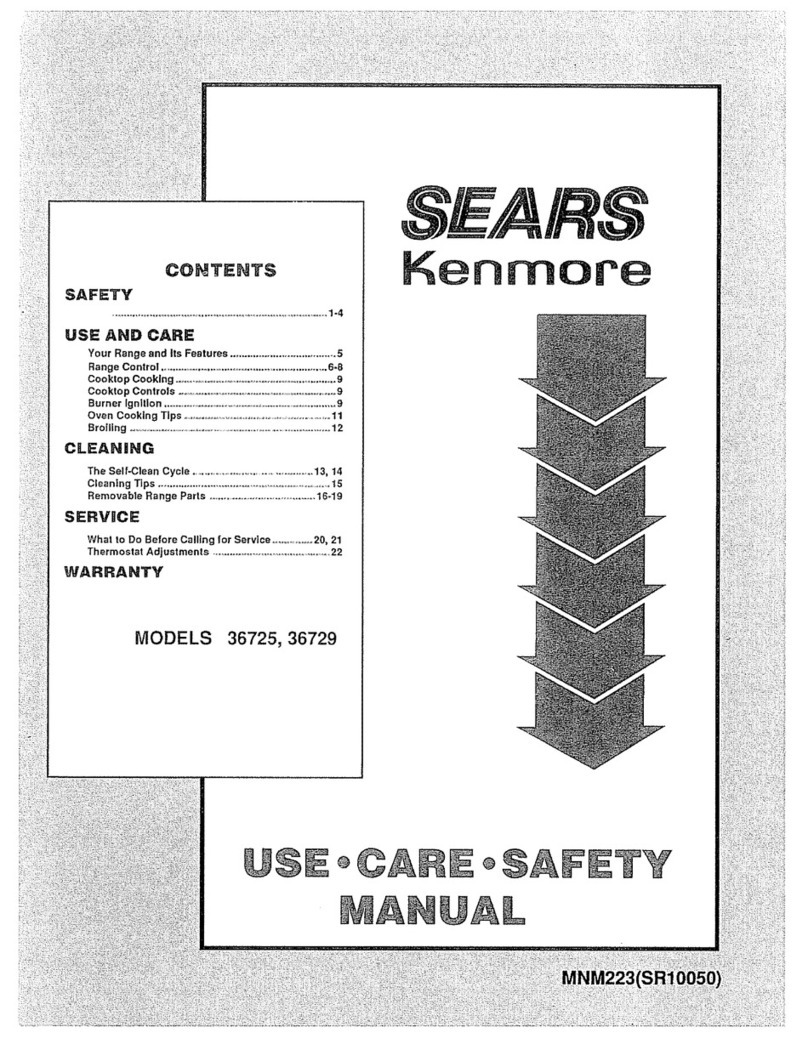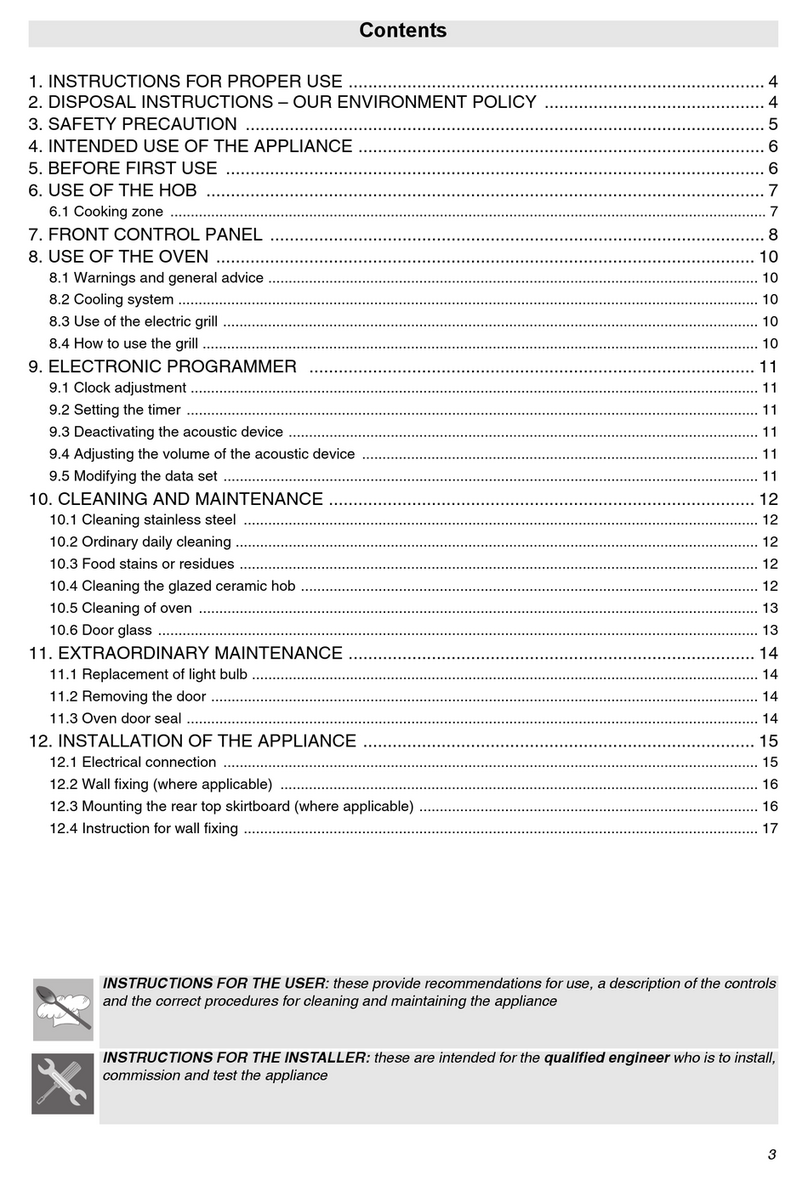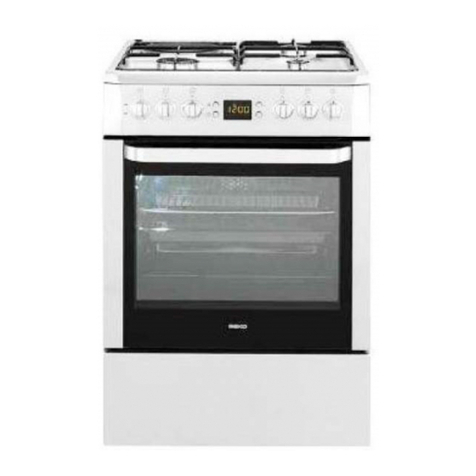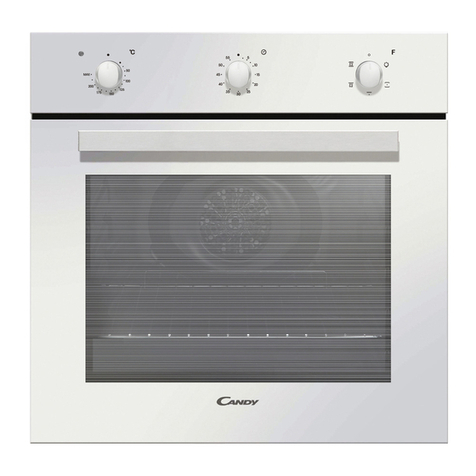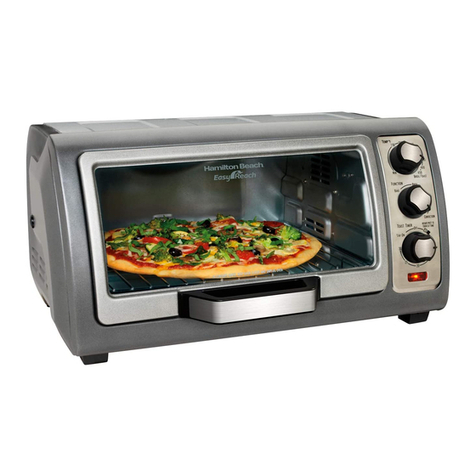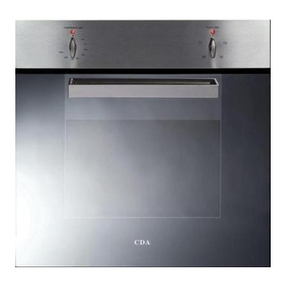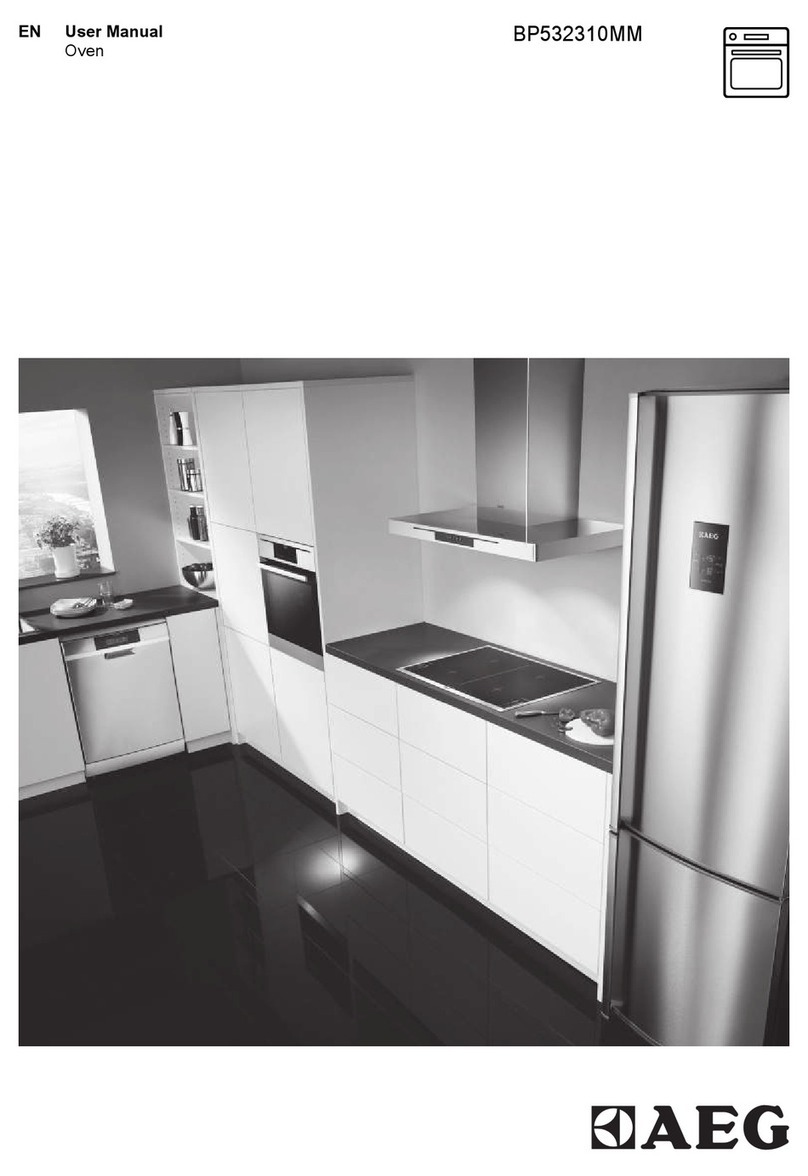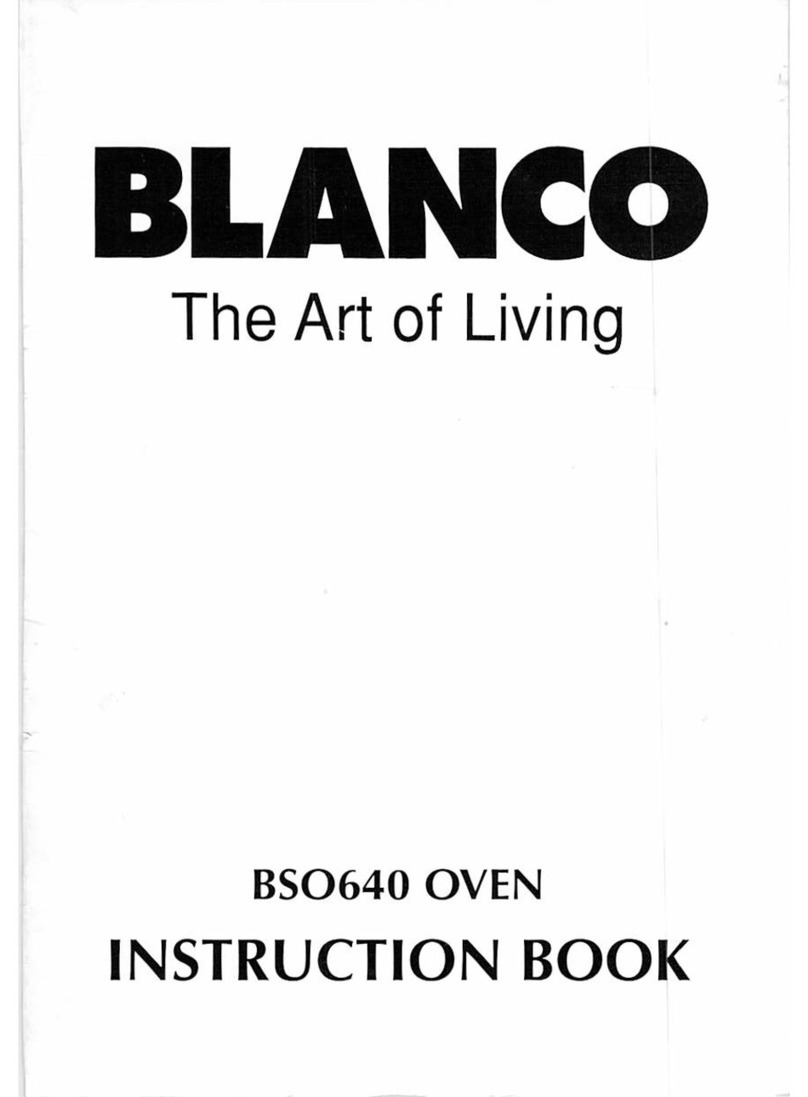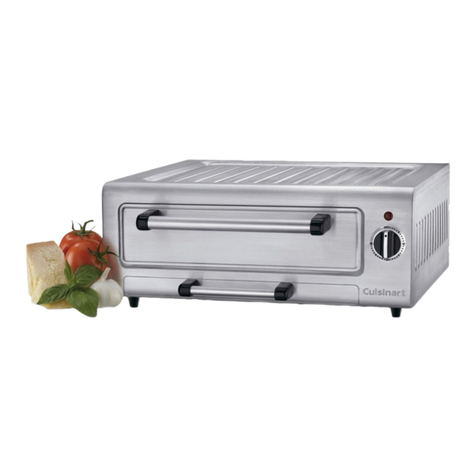
4
Checks before purchasing
• it is possible to maintain the following minimum
distances of the oven from walls, other appliances,
objects and combustible materials Fig. 4 :
• left/right side: 50 mm (in case of proximity to hot or
cold equipment, keep a distance of 500 mm);
• back: 50 mm
• top: 1000 mm
It is vital to comply with the minimum safety
distances that must be increased in the presence
of objects in materials sensitive to heat;
• there is an evacuation ue for the exclusive use of
the equipment, which complies with current regula-
tions and which has a diameter that allows the pas-
sage of an evacuation tube of 150 mm.
The oven is equipped with an adjustable smoke
outlet located at the top for the evacuation of
the vapours from the cooking chamber (you can
find its exact position in the "Technical data" section
starting on page 6).
This steam, together with the one from the door during
the work phases, must be conveyed outside in one of
the following ways:
Athrough a hood supplied by the Manufacturer
which ensures perfect compatibility with the oven.
For correct assembly and fixing to the oven, see
the sheet attached to it; the evacuation flue must
be for the exclusive use of the appliance, comply
with current regulations and have a diameter that
allows the passage of a 150 mm evacuation pipe
which corresponds to the diameter of the tube to
be mounted on the hood (not supplied).
Bthrough a hood belonging to the user, of suitable
capacity, placed at about 300 mm from the oven;
Cthrough an adequate extraction system sup-
plied by the user connected to the oven smoke
evacuation: in this case a draught switch must
be installed between the extractor and the oven
chimney (the extractor and switch are not sup-
plied by the Manufacturer). In this type of installa-
tion the fumes resulting from the opening of the
door will not be extracted.
C
Survey the installation room to make sure it is
adequate.
√Make sure that Fig. 3
• the oor of the installation room is reproof,
perfectly level and capable of withstanding the
weight of the appliance;
Model
GT110 517 kg
GT140 636 kg
KGT 50 kg
• the installation room:
• is dedicated and suitable to cooking food;
• has adequate air ventilation;
• contains no flammable or explosive elements;
• complies with the current regulations on health
and safety and systems in the workplace;
• is protected from the weather;
• has a maximum temperature of between +5° (41°F)
and +35°C (104°F);
• has a maximum humidity of 70%.
• the appliance passes through the doorways easily.
When choosing the positioning room, take into
account that the appliance must be easy to
move for any extraordinary maintenance: be
careful since any brickwork after installation (e.g.: wall
construction, door replacement with narrower ones,
renovations, etc.) do not hamper movements.
• there are NO other sources of heat (i.e. grills, fryers,
etc.), highly flammable substances or fuels (i.e.
gasoline, petrol, bottles of alcohol, etc...) in the vicinity
of the appliance.
• there is adequate ventilation according to the reg-
ulations in force in the country of installation. In its
absence, a ø140 mm air intake communicating with
the outside or with a ventilated room (e.g. warehouse,
attic, garage, basement) is mandatory;
D Inform the owner about the necessary electrical
arrangements (activities to be carried out by a
qualied electrician)
√For a correct connection Fig. 3:
• provide sockets connecting to the electrical net-
work near the oven.
The “Technical data” section from page 6
contains all the electrical data as well as the
positions of the supply cable and equipotential
terminal.
• get a connection cable Aand a plug B: the
appliance is supplied without a power cable and plug,
both must be fitted by qualified personnel. The cable
must be exclusively of the stated type and a plug
with adequate capacity for the absorption of the oven
to connect it to the mains must be fitted.
• A plug is supplied with the oven Cwhich must be
plugged in a socket Dbehind the oven itself.
• check that the systems in the room comply with
the legal provisions in force in the country of
use and meet the specifications on the serial number
plate. Remember that, for a correct connection, the
appliance must:
• be included in an equipotential system in
compliance with the current legislation. This
connection must be made between different
appliances with the terminal marked with the
equipotential symbol . The conductor must
have a minimum cross-section of 10 mm2 (in
compliance with the IEC EN 60335-2-42:2003-09
standard) and be green/yellow;
• must be grounded to the mains (green-yellow
wire);
• must be connected to a thermal dierential
switch in compliance with the regulations in force
(0.03A A type);
• must be connected to an omnipolar circuit
breaker allowing complete disconnection in
overvoltage III category conditions.





















